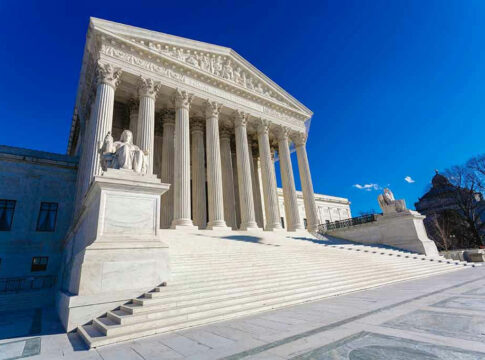Justice Elena Kagan has sounded the alarm about the Supreme Court’s so-called “shadow docket,” a process that seems more like a backdoor approach to decision-making than a pillar of transparency and justice.
Kagan’s Critique of the Shadow Docket
Justice Elena Kagan took a bold step by publicly criticizing the Supreme Court’s increasing reliance on its “shadow docket.” This process involves issuing emergency orders without the usual full briefings or oral arguments, often lacking explanation or transparency. Kagan’s outspoken critique highlights a growing concern: the potential erosion of judicial accountability and clarity. This shadowy process confuses lower courts, the public, and ultimately shakes the very foundation of trust in our judiciary system.
In recent developments, the Supreme Court used this shadow docket to issue a 6-3 emergency order allowing the Trump administration to fire thousands of Department of Education employees without any explanation. This move, which Kagan and others view as an attack on transparency, demonstrates the unchecked influence of the conservative majority in the Court. The lack of explanation complicates the lower courts’ ability to understand and interpret these decisions, creating a chaotic legal landscape.
The Rise of the Shadow Docket
The shadow docket’s rise is closely tied to the political climate and heightened polarization in recent years. Traditionally, this docket was reserved for rare, procedural orders. However, its use has expanded to include high-profile and politically sensitive cases, often favoring executive actions from the Trump administration. This shift raises questions about the balance of power between the executive branch and the judiciary. Critics argue that the shadow docket bypasses normal procedures, reducing accountability and undermining the rule of law.
In the US, everything is politicized, even the Supreme Court.
Just three years ago, Justice Elena Kagan said that district courts should not be allowed to issue injunctions and disrupt nationwide policies.
But now she supports it to stop Trump.
(SCOTUS) pic.twitter.com/1Zlhv54cQy
— S.L. Kanthan (@Kanthan2030) June 28, 2025
Justice Kagan’s remarks at the Ninth Circuit Judicial Conference brought renewed attention to this issue. Her critique reflects a broader debate within the judiciary about the legitimacy and transparency of the process. Other justices, like Sonia Sotomayor, have also voiced concerns, emphasizing the constitutional authority of Congress over federal agencies and criticizing executive overreach.
Impact on Judicial Norms and Public Trust
In the short term, the shadow docket’s use allows for the rapid implementation of policy changes, such as mass firings at federal agencies. However, this approach creates uncertainty about legal standards and future rulings for lower courts and affected parties. The long-term implications are more troubling. The erosion of judicial transparency and accountability could weaken public trust in the Supreme Court and the rule of law. This practice sets a precedent for future executive actions to bypass normal judicial scrutiny, posing a significant threat to our democratic institutions.
The political, social, and economic impacts of this practice are profound. Federal agencies experience instability and reduced morale due to sudden personnel changes. The legal profession faces challenges in advising clients and interpreting precedent. The broader public, whose rights and interests may be affected by opaque judicial decisions, may grow increasingly skeptical of the judiciary.
Experts Weigh In on the Shadow Docket
Legal scholars and commentators widely criticize the shadow docket for undermining judicial transparency and accountability. While some argue that the process allows for necessary expediency in urgent cases, they caution against its overuse and lack of explanation. Justice Kagan’s critique is echoed by other justices and legal academics, who warn that unexplained orders erode the Court’s legitimacy and the rule of law.
Supreme Court Justice Elena Kagan is urging her colleagues on the bench to be more transparent as they make an increasing number of emergency decisions — including those involving President Trump.
At an event in California, Kagan criticized how the court has handled a flood of… pic.twitter.com/SHYX4Zzdz7
— PBS News (@NewsHour) July 25, 2025
Justice Sotomayor’s dissent highlights constitutional checks and balances, particularly congressional authority over federal agencies. The debate over the shadow docket reflects broader tensions between the executive and judiciary, as well as within the Court itself. As the Supreme Court continues to wield this powerful tool, the need for transparency and accountability becomes more urgent than ever.

